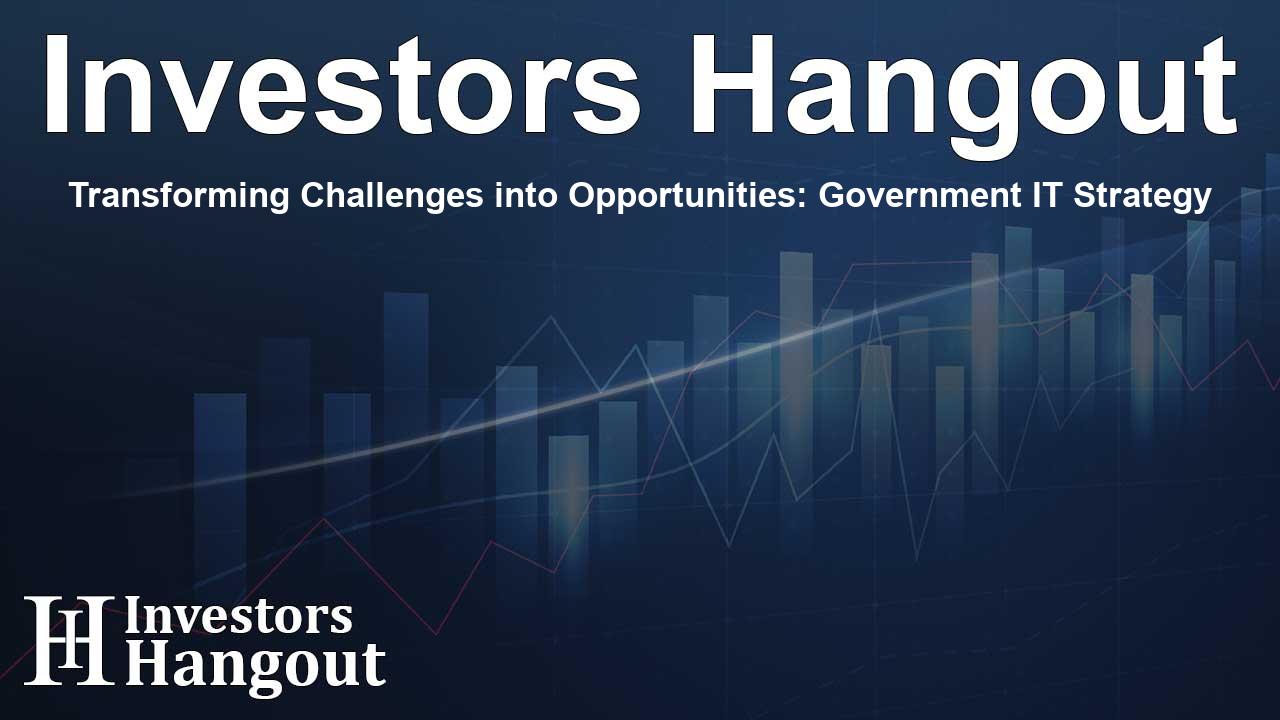Transforming Challenges into Opportunities: Government IT Strategy

Embracing IT as a Strategic Advantage
In the face of growing uncertainties and the mounting pressures of modern governance, IT leaders in public sectors are tasked with adopting innovative strategies. Info-Tech Research Group provides invaluable insights with a structured technology-first blueprint aimed to help these leaders transform operational challenges into compelling opportunities. This roadmap not only fortifies resilience but also enhances resource optimization and delivers tangible results for government organizations and the constituents they serve.
Adopting a Structured Approach Amid Challenges
Government IT departments often find themselves overwhelmed by immediate operational issues, struggling to balance necessary day-to-day functions with the broader goals of transformative progress. Info-Tech's blueprint illustrates the drawbacks of remaining in reactive mode, which can diminish constituent trust and hamper digital modernization efforts. Instead, it encourages IT leaders to adopt a strategic outlook, where technology serves as a vital pillar for building resilience and efficiency.
Four Strategic Phases of the Blueprint
Info-Tech's approach is delineated into four key phases that help government IT teams navigate volatility:
Phase 1: Assessing Uncertainties and Opportunities
In the initial phase, leaders and policy advisors collaborate with IT teams to identify vulnerabilities while spotting technology-driven opportunities. This assessment is crucial for fully understanding the risks, as it lays the groundwork for informed decision-making. Recognizing these factors early helps in mapping out a strategic path forward.
Phase 2: Reviewing Financial and Staffing Structures
In partnership with finance and procurement teams, IT leaders dive into a thorough examination of budget allocations, staffing levels, and vendor contracts. This collaborative effort aims to streamline spending, cutting unnecessary costs where feasible and reallocating those savings to areas that promise innovation and modernization.
Phase 3: Creating a Technology-First Action Plan
The third phase sees IT teams working closely with HR and innovation sectors to construct a comprehensive 12-month action plan. This roadmap prioritizes projects that not only enhance digital capacities but also drive talent development and leverage new technologies like artificial intelligence.
Phase 4: Preparing for Implementation
The final phase involves department heads, change management leaders, and communications teams gearing up for execution. Their goal is to foster adaptability within the organization’s framework by crafting crystal-clear project initiatives combined with a vision that resonates with the organization’s overarching values.
Benefits of a Technology-First Approach
Following the strategic phases of Info-Tech’s blueprint, government IT leaders can shift from fragmented, reactive responses to a cohesive, proactive technology-first strategy. This change not only fortifies organizational resilience but also promotes responsible technology adoption, enabling measurable enhancements in operational capabilities.
Neal Rosenblatt, a principal research director at Info-Tech Research Group, articulates this perspective perfectly, asserting, "Modern technological tools empower leaders with innovative ways to overcome legacy challenges, streamline processes, and enhance relationships with constituents. By acting now, IT leaders can align their technology investments to act as a strategic resilience initiative rather than merely a line item in budgets."
In summary, the framework provided by Info-Tech Research Group lays down critical pathways for government entities to navigate uncertainty effectively. The insights embedded within this blueprint empower IT leaders to make proactive decisions that resonate well beyond the current challenges, ensuring they deliver consistent value to their constituents.
Frequently Asked Questions
What is the purpose of Info-Tech Research Group's blueprint?
The blueprint aims to assist government IT leaders in transforming operational uncertainty into strategic advantages by adopting a structured technology-first approach.
How many phases are outlined in the strategy?
Info-Tech's blueprint outlines four essential phases designed to guide IT leaders through challenges and uncertainty effectively.
What is the focus of Phase 1?
Phase 1 emphasizes assessing uncertainties and opportunities, helping leaders identify risks and potential technology-driven solutions early in the process.
How does the blueprint help with budgeting?
During Phase 2, the blueprint provides a framework for reviewing financial and staffing structures to optimize spending and redirect resources to modernization efforts.
What outcome should leaders expect from following this plan?
By adhering to the structured phases, government IT leaders can cultivate resilience, improve operational efficiency, and enhance the quality of service delivery to their constituents.
About The Author
Contact Addison Perry privately here. Or send an email with ATTN: Addison Perry as the subject to contact@investorshangout.com.
About Investors Hangout
Investors Hangout is a leading online stock forum for financial discussion and learning, offering a wide range of free tools and resources. It draws in traders of all levels, who exchange market knowledge, investigate trading tactics, and keep an eye on industry developments in real time. Featuring financial articles, stock message boards, quotes, charts, company profiles, and live news updates. Through cooperative learning and a wealth of informational resources, it helps users from novices creating their first portfolios to experts honing their techniques. Join Investors Hangout today: https://investorshangout.com/
The content of this article is based on factual, publicly available information and does not represent legal, financial, or investment advice. Investors Hangout does not offer financial advice, and the author is not a licensed financial advisor. Consult a qualified advisor before making any financial or investment decisions based on this article. This article should not be considered advice to purchase, sell, or hold any securities or other investments. If any of the material provided here is inaccurate, please contact us for corrections.
